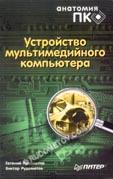The computer for multimedia
 Possibilities of modern computers, their relative cost and efficiency of application are defined reached by manufacturers and to accessible PC users by a level of development of processing technique of equipment rooms and software. Though until recently multimedia computers were selected in a separate category, now this distinction becomes more and more indistinct. Already new version of such popular office package as MS Office XP, contains speech recognition and multimedia learning components that assumes presence of similar resources even for office computers. Modern home PCs step-by-step turn to multifunctional hardware-software complexes for playback, conversions and processings of various audio-and a video information.
Possibilities of modern computers, their relative cost and efficiency of application are defined reached by manufacturers and to accessible PC users by a level of development of processing technique of equipment rooms and software. Though until recently multimedia computers were selected in a separate category, now this distinction becomes more and more indistinct. Already new version of such popular office package as MS Office XP, contains speech recognition and multimedia learning components that assumes presence of similar resources even for office computers. Modern home PCs step-by-step turn to multifunctional hardware-software complexes for playback, conversions and processings of various audio-and a video information.
Intensive development of a computer technology demands constant upgrade of sites of the computer that their characteristics corresponded to requirements of the modern software and solved tasks. Retrieval of the necessary information on separate components of the personal computer, their principle of operation and compatibility assumes regular reading of the various periodic literature that is not always accessible to a wide range of PC users. Therefore for readers the big interest is represented by a series «PC Anatomy», released by publishing house "Peter" in which this information is shown together and allows to get acquainted with modern characteristics of various sites of the computer. Evgenie and Victor Rudometovyh's new book «Arrangement of the multimedia computer» is devoted consideration of the architecture of the modern multimedia PC, possibilities of its separate sites and reaching of optimal productivity.
According to a computer complete set all book is divided into chapters, each of which considers a choice of one of arrangements. Since the common guidelines for choice the PC and its system unit, authors pay the big attention to such components, as the processor and the motherboard, and also to buses of the computer and its dynamic storage. The correct choice of these components provides not only high high-speed performance of the PC, but also possibility of its further upgrade.
The PC external memory provides writing, reading and non-volatile storage of programs and data and is presented by disk drives, and also CD-ROM drives and DVD. The video subsystem of the computer including the screen monitor and the videoadapter, also demands their co-ordinated selection for support of excellence of the map and appropriate ergonomic parametres. At last, distinctive feature of multimedia of the computer till now is presence of a sound map and audio system though now to them the video blaster (TV-tjuner) was added also, allowing to digitize a signal from the TV or the videorecorder. The separate chapter is devoted systems of a virtual reality, input devices and output of the information for them, and also to principles of their operation.
Besides, modems and the equipment for the local area network organisation, the factors influencing productivity of the PC, and possibility of their optimisation, and also application of the forced functional modes of the processor are considered.
In the book it is popular, but with an adequate accuracy principles of operation of the majority of considered arrangements are described. The retrospective analysis of development and alternation of generations of processors is given. Results of comparative testing of productivity for processors and videoadapters are resulted. This information allows even to the beginner to define, what pattern of the computer will meet the requirements of solved tasks and how to pick up computer components so that further upgrade demanded in it the minimum changes. Therefore the given issuing can be recommended to all who is gathered to buy the modern multimedia computer and wishes to select with skill from set of offered variants that unique which is intended for it.
Igor Kuznetsov,
The senior lecturer of Electrotechnical university (LETI)
"Computer-info" № 30 (257)
On October, 1st, 2001
 English
English Russian
Russian German
German